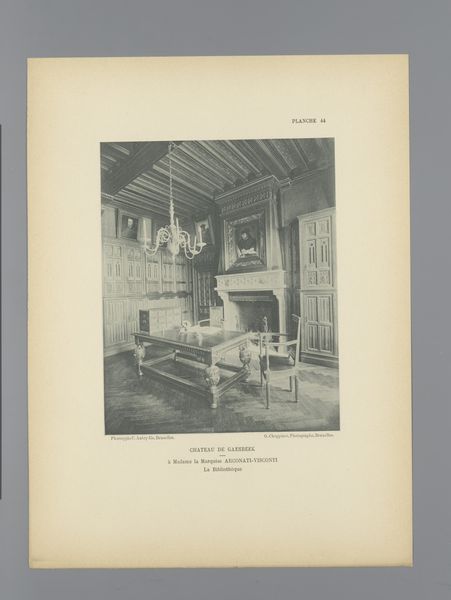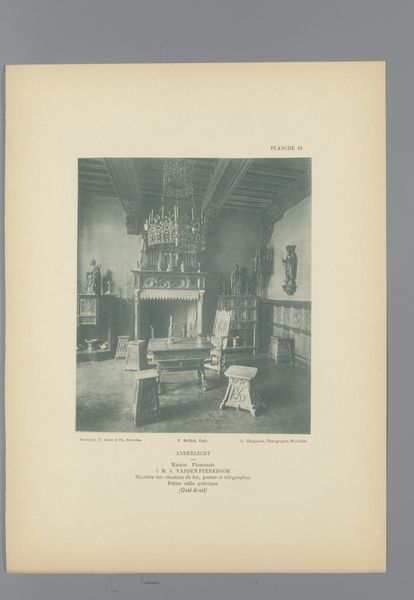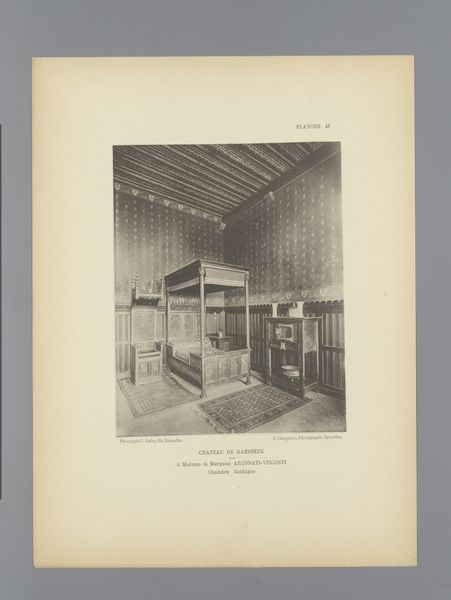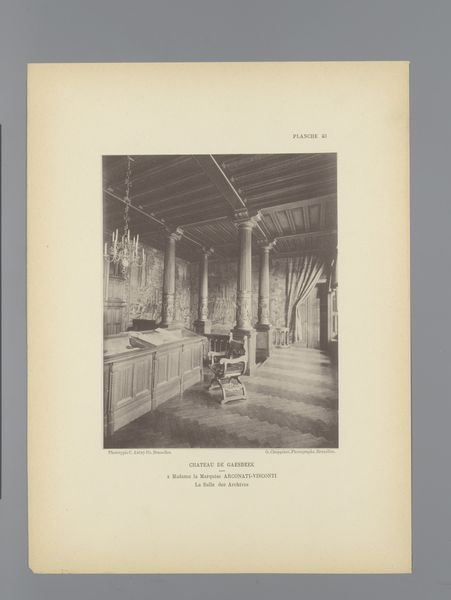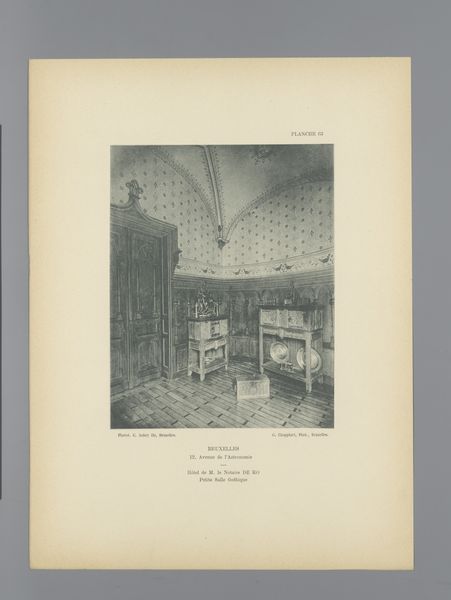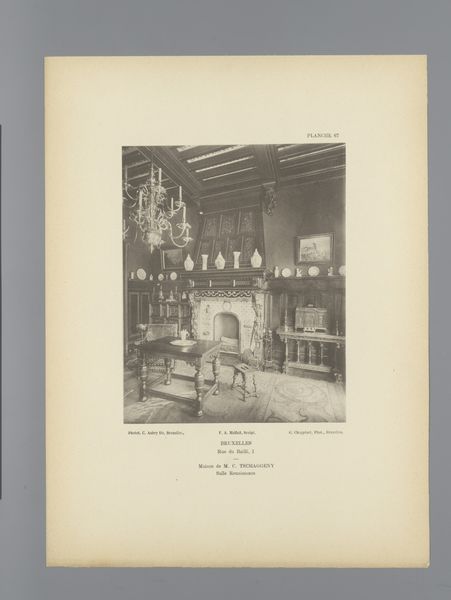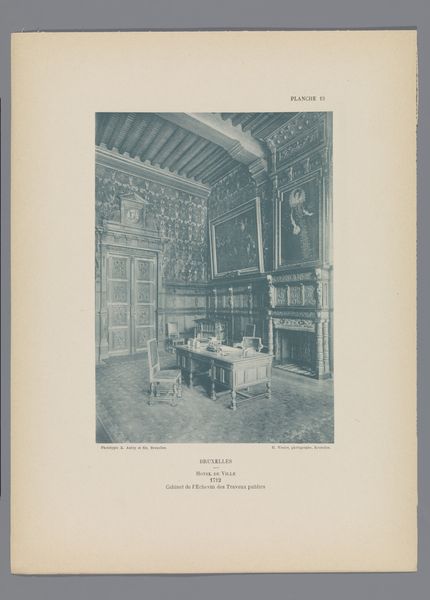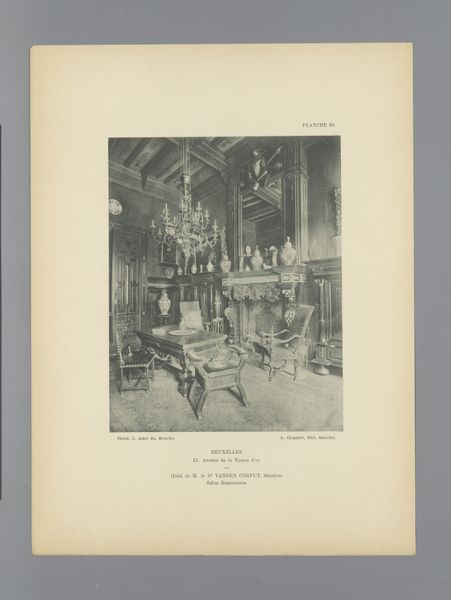
Gezicht op een kleine zaal in renaissancestijl in het Kasteel van Gaasbeek, België before 1898
0:00
0:00
photography, gelatin-silver-print
#
11_renaissance
#
photography
#
gelatin-silver-print
#
academic-art
Dimensions: height 194 mm, width 156 mm
Copyright: Rijks Museum: Open Domain
Curator: The gelatin-silver print we’re observing is titled “Gezicht op een kleine zaal in renaissancestijl in het Kasteel van Gaasbeek, België,” or “View of a Small Renaissance Room in Gaasbeek Castle, Belgium.” Dating from before 1898, it's credited to G. Choppinet. Editor: My immediate reaction is a sense of constrained opulence. The ornamentation is dense, yet the grayscale tonality creates a sort of hushed, almost melancholic atmosphere. Curator: Exactly. This room, typical of Renaissance revival architecture, projects a very specific statement. The carved furniture, the heraldic patterns on the wall, even the deliberate arrangement--they all contribute to a narrative of power, ancestry, and the perpetuation of elite identity. But what power dynamics might be present behind this revival? Editor: I’m drawn to those heraldic patterns you mention. The repeated motif—some shield or emblem, I presume—is an obvious attempt to connect to some grand ancestral narrative, grounding this space in history and lineage. But it’s the flatness of the photographic rendering that fascinates me. It almost deconstructs the assumed gravity of those symbols. Curator: I think it underscores the act of historical retrieval. In the late 19th century, photographing these revival spaces became a method to frame cultural and social hierarchies in Belgium. But that access was gendered, no? How are we thinking about access, exclusion, and class in regards to these photographs? Editor: That's interesting, because if you divorce the photograph from its stated intention, these recurring symbols almost start to feel… decorative, repetitive even. It becomes about visual impact, which transforms it, ironically, into a sort of commentary about authenticity versus constructed history. Curator: This tension encapsulates much of late 19th-century Europe as it related to the concept of nationhood and historical re-enactment as performance of dominance. How might such revival practices allow us to access more fluid understandings of belonging or not belonging in relationship to Belgian identity? Editor: Indeed, it's this visual tension, this friction between intent and outcome, that keeps my attention. What originally communicates control and authority can also be read as artifice. Curator: A productive paradox! It reveals how photography, in its own way, destabilizes the very narratives it intends to uphold. Editor: Agreed. Thinking through these images as material objects allows a deeper engagement of political thought that informs its historic time frame.
Comments
No comments
Be the first to comment and join the conversation on the ultimate creative platform.
